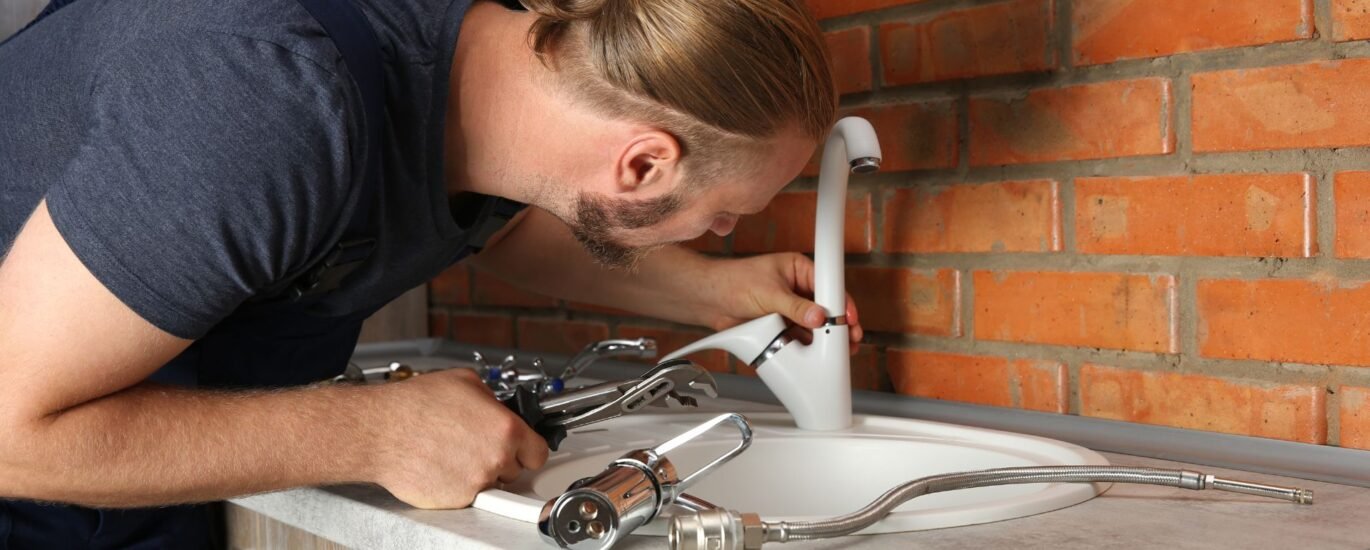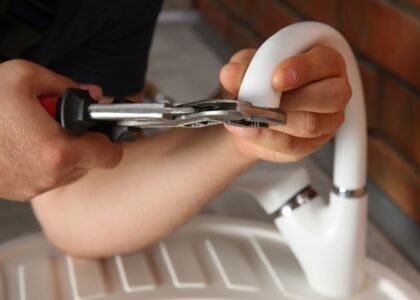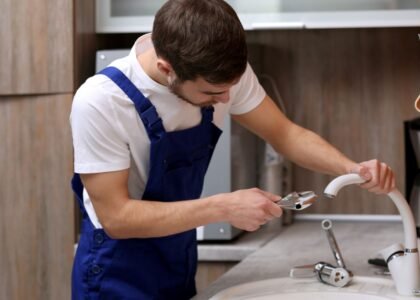Why Maintenance Matters
Even the best faucet can underperform if the supporting plumbing isn’t in good shape. Maintenance protects your investment and helps you avoid repeated issues like low flow, leaks, and finish damage. By pairing proactive care with smart usage, you’ll enjoy your new fixture for years.
Regular Maintenance Tasks for Your Faucet
Here are actionable tips to help you care for your new faucet:
Clean Without Damage
- Wipe the faucet finish weekly with a soft cloth and mild soap. Avoid harsh abrasives, bleach, or acidic cleaners unless specified safe by the manufacturer.
- Remove mineral deposits from the aerator by unscrewing it periodically, rinsing, and replacing it. Good flow starts at the aerator.
- Use a cartridge/valve lubricant (when applicable) for handles that feel stiff or squeaky.
Check for Leaks & Wear
- Under the sink, inspect supply line connections every few months for moisture or corrosion.
- Listen and feel for drips or moisture around the base of the faucet or beneath the sink. A new leak often signals a worn washer or supply line issue, not the faucet body.
- Verify shut-off valves still operate smoothly. If they’re seized or leaking, consider replacement to protect the faucet.
Maintain Water Flow & Pressure
- If water pressure drops noticeably at the faucet, inspect the aerator, supply lines, and shut-off valves.
- If both hot and cold lines show low pressure, it may point to a larger issue in the plumbing system.
- Flushing the faucet (running full flow for 1–2 minutes) occasionally helps clear debris.
System-Wide Plumbing Care to Support Your Faucet
Since your faucet sits at the end of the plumbing chain, ensuring the system behind it is healthy prevents many issues:
- Supply lines & shut-offs: Older braided hoses or corroded copper lines can restrict flow or leak. Replace if more than 10-15 years old.
- Water quality: Hard water (high mineral content) can clog aerators, valve cartridges and affect finish. Consider a water softener or scale reducer if you notice buildup.
- Usage patterns: If your household water usage increases (additional fixtures or appliances added), ensure that your plumbing system and fixtures are sized appropriately.
- Prompt attention to issues: A leak at one fixture often signals stress on the system. Addressing it quickly prevents damage to cabinets, flooring or finishes.
Your appliance or fixture upgrade (like the new faucet) is only as good as the plumbing it’s connected to. A holistic approach pays dividends.
When to Consider Reassessment or Further Upgrades
Even after a successful faucet replacement and solid upkeep, there are times you might need to revisit your plumbing strategy:
- If you bounce from one fixture replacement to the next but continue seeing low performance (slow flow, pressure issues, frequent leaks) — the underlying system may need attention.
- If you’re remodeling the kitchen or bathroom, adding multiple fixtures, or moving from older plumbing materials (galvanized steel, cast iron, etc.) to modern ones — you might need to plan for a plumbing system refresh.
- If you’re preparing your property for sale or upscale use and want consistent high performance across fixtures, sounds, finishes and plumbing behavior.
In such situations, replacing the faucet alone isn’t the full answer; aligning fixture upgrades with system health is key.
Your Next Step & How We Can Help
We designed this faucet-replacement blog series to help you understand the full scope — from why to replace, how to select and install, to how to maintain and integrate into your plumbing system. When you’re ready to proceed with your own faucet replacement project, check our Professional Faucet Replacement Services page.
If you’d like to talk specifics about fixture options, compatibility with your plumbing system, or other plumbing considerations, simply visit our Contact Us page to get in touch.
Conclusion
Upgrading your faucet is a smart move—but the real lasting benefit comes when you pair the right fixture with good installation, regular maintenance, and a solid plumbing system. With that foundation in place, your fixture will look great, perform well, and avoid becoming a recurring inconvenience. Whether you’re planning a simple upgrade or integrating multiple fixture changes, your plumbing performance is in your hands — and we’re here to help when you’re ready.



